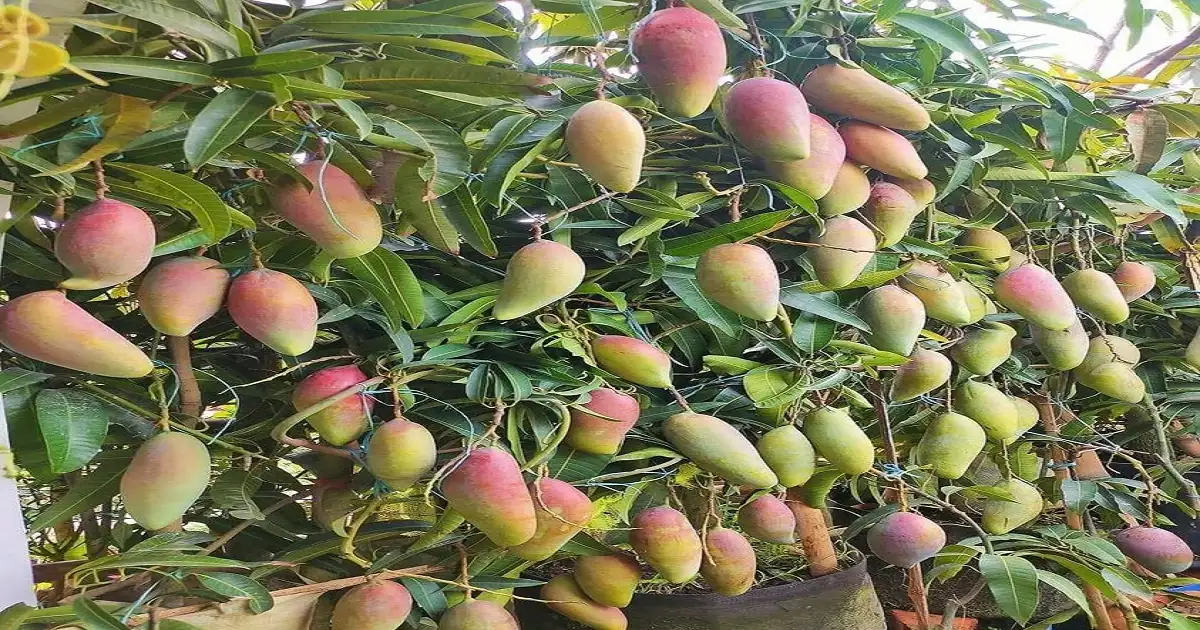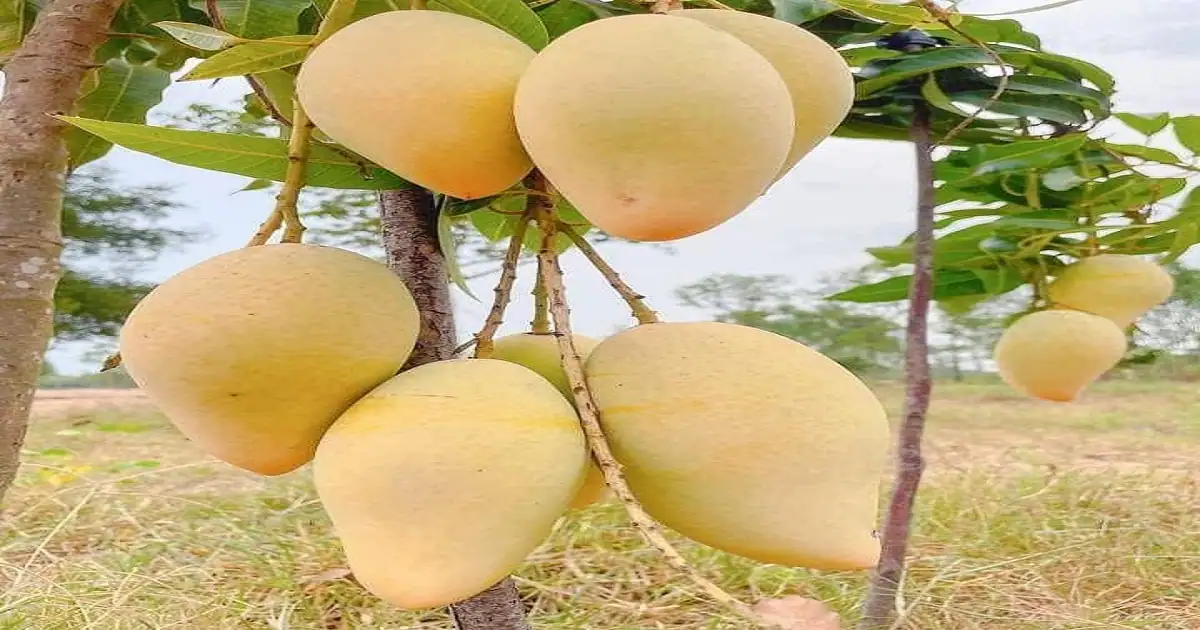Mangoes, a widely enjoyed tropical fruit, hold a prominent position in global consumption. Mangoes are celebrated for their unique blend of sweetness and tanginess, while also serving as a nutrient powerhouse rich in vital vitamins, minerals, and fiber. With cultivation spanning across more than 100 countries, it is in India where mango production reaches its zenith, establishing the country as the foremost global producer. The global appeal and significance of mangoes are a testament to their exceptional flavor and abundant nutritional benefits. Within this comprehensive guide, we will delve into the realm of mango farming, exploring the nuances of cultivation, diverse varieties, and the manifold benefits associated with this delectable fruit. Prepare to embark on a journey that unravels the secrets of successful mango cultivation and unlocks a world of flavors and nourishment.
Mango Farming, Cultivation, Types & Benefits

Engaging in mango farming entails nurturing and tending to mango trees to yield an abundance of delectable mango fruits. These trees are renowned for their resilience, requiring only modest upkeep, thereby presenting an excellent opportunity for small-scale farmers. Towering up to impressive heights of 30 meters, mango trees possess remarkable longevity, bearing fruit for as long as four decades.
1. Mango Cultivation
Mango cultivation involves planting mango trees, pruning, irrigation, pest control, and harvesting. To foster the thriving of mango trees, two vital factors come into play: well-drained soil and ample sunlight. To facilitate their optimal growth, it is recommended to plant mango trees during the monsoon season. By adhering to this advice, farmers can create an ideal environment for their mango trees, enabling them to flourish and bear abundant fruit. The nourishing rain showers during this period greatly assist young trees in establishing robust root systems, setting them up for success. Additionally, periodic pruning is essential to maintain the tree’s vitality by eliminating dead branches and encouraging vigorous growth.
2. Mango Types
The world of mangoes is a delightful tapestry of diversity, offering a vast array of flavors, textures, and appearances. With hundreds of different types available, mango enthusiasts have a wealth of choices to explore. Let’s take a glimpse at some of the most sought-after mango varieties:
– Alphonso Mango: Revered as the “King of Mangoes,” the Alphonso variety reigns supreme. Its exquisite sweetness, coupled with a lusciously creamy texture, elevates the taste buds to new heights.
– Ataulfo Mango: This type of mango is smaller than other varieties and has a deep yellow color and a sweet, buttery taste.
– Tommy Atkins Mango: This variety is the most common type of mango in the United States and has a mild, sweet flavor.
– Kent Mango: The Kent mango has a sweet and rich flavor and is often used in smoothies, salads, and desserts.
3. Mango Benefits
Mangoes are not only delicious but also have numerous health benefits. Discover the remarkable benefits of mangoes
– Fortifying the Immune System: Elevate your defense against illnesses with mangoes. Bursting with vitamin C, this fruit becomes a powerful ally in strengthening your immune system, enabling it to combat infections more effectively.
– Enhancing Digestive Health: Bid farewell to digestive woes by incorporating mangoes into your diet. Brimming with dietary fiber, these juicy fruits facilitate smooth digestion, preventing uncomfortable issues like constipation and promoting a healthy gut.
– Nurturing Radiant Skin: Indulge your skin in the nourishing embrace of mangoes. With their abundant antioxidant content, these fruits shield your skin from harmful free radicals, leaving it looking vibrant, youthful, and protected against damage.
– Safeguarding Against Cancer: Unveiling their hidden treasure, mangoes offer polyphenols renowned for their anti-cancer properties. By incorporating mangoes into your meals, you proactively reduce the risk of developing this formidable disease.
Mango Farming Techniques

Mango farming encompasses a variety of techniques, encompassing both traditional and modern approaches. Traditional methods of mango farming rely on organic fertilizers, natural pest control methods, and manual labor for cultivation. Conversely, modern techniques utilize chemical fertilizers, pesticides, and mechanized equipment to enhance productivity. By employing a combination of these techniques, mango farmers can strike a balance between the wisdom of traditional practices and the efficiency of modern innovations, ultimately optimizing their farming endeavors.
1. Traditional Mango Farming Techniques
In the realm of mango farming, traditional practices have long relied on organic fertilizers like cow dung and compost to enhance the soil’s fertility and foster robust growth. To keep pests and diseases at bay, natural pest control measures like neem oil and garlic spray are employed. The tasks of pruning and harvesting are carried out manually, with diligent labor and care.
2. Modern Mango Farming Techniques
Contemporary practices in mango farming encompass the adoption of chemical fertilizers, pesticides, and mechanized machinery, which play a pivotal role in augmenting crop production and curbing labor expenditures. Chemical fertilizers serve as a vital source of essential nutrients, nurturing optimal plant growth, while pesticides aid in the management of pests and diseases. Furthermore, the utilization of mechanized equipment like tractors and harvesters facilitates heightened efficiency and diminished labor-related expenses.
Common Mango Farming Problems
Mango farming, like any other agricultural activity, is not without its challenges. Some of the common problems faced by mango farmers include pests and diseases, climate change, and market access.
1. Pests and Diseases
Mango trees face numerous challenges from pests and diseases, posing a threat to both the quantity and quality of their fruit yield. Among the culprits that frequently target mango trees are fruit flies, mango mealybugs, and scale insects. Additionally, fungal infections like anthracnose and powdery mildew can also detrimentally impact the health of mango trees.
2. Climate Change
Mango farmers encounter the pressing issue of climate change as an additional hurdle. The alterations in temperature and rainfall patterns pose a significant impact on the growth and progress of mango trees. Furthermore, extreme weather occurrences like floods, droughts, and storms can inflict damage upon mango trees and lead to diminished crop yields.
3. Market Access
Access to markets is another challenge faced by mango farmers. Mangoes are highly perishable, and it can be challenging to transport them to distant markets without compromising their quality. Poor infrastructure, lack of storage facilities, and high transport costs can also affect market access.
Conclusion
Mango cultivation presents an enticing opportunity with a myriad of advantages. The delectable flavor and abundant health benefits of mangoes make them an excellent inclusion in any culinary repertoire. Nevertheless, like any agricultural pursuit, mango farming comes with its own set of obstacles. To thrive in this field, farmers must possess the necessary expertise and proficiency to tackle these challenges head-on. We aspire that this all-encompassing manual has furnished you with the requisite insights to embark on your mango farming journey.
How long does it take for a mango tree to bear fruit?
Mango trees usually start bearing fruit after 3-5 years of planting.
What is the best time to harvest mangoes?
The best time to harvest mangoes is when they are fully ripe and have developed their characteristic color and aroma.
What is the best way to store mangoes?
Mangoes should be stored in a cool, dry place away from direct sunlight. They should also be handled carefully to avoid bruising.
How can I control pests and diseases in my mango farm?
You can control pests and diseases in your mango farm by using natural pest control methods such as neem oil and garlic spray, and practicing good farm hygiene.
What are some of the factors that affect mango yields?
Some of the factors affecting mango yields include soil fertility, climate, pests and diseases, and agricultural practices.
How can I increase the yield of my mango farm?
You can increase the yield of your mango farm by using improved agricultural practices such as irrigation, fertilization and pest control, and by planting higher yielding varieties.
